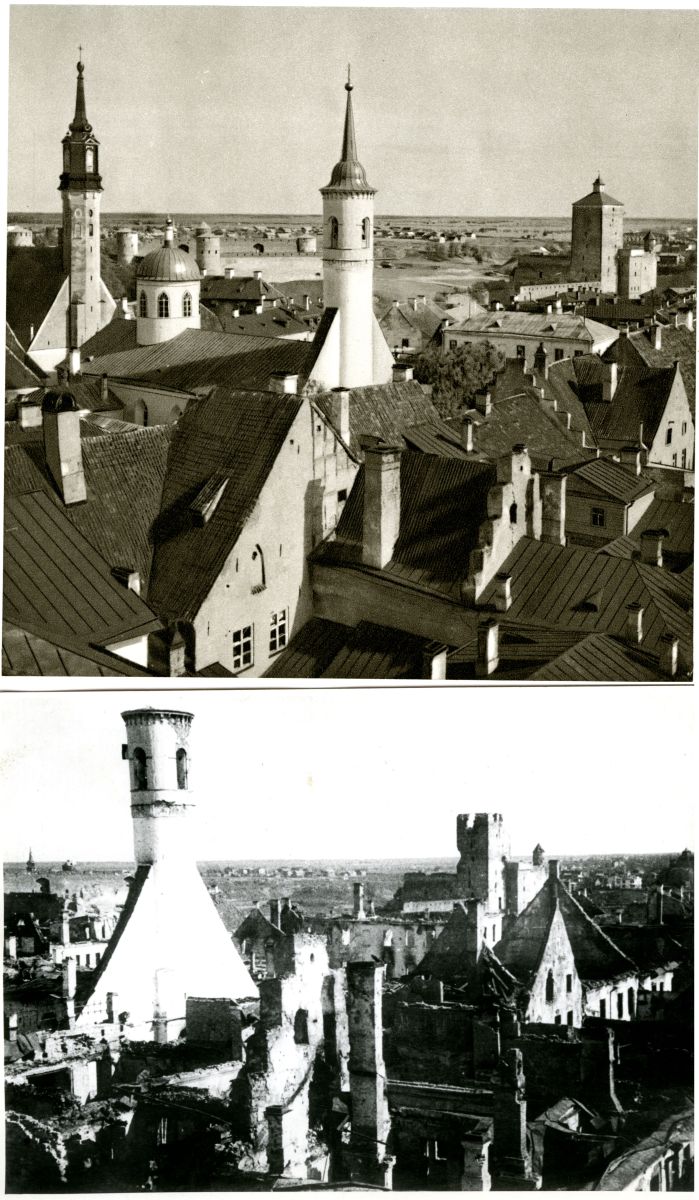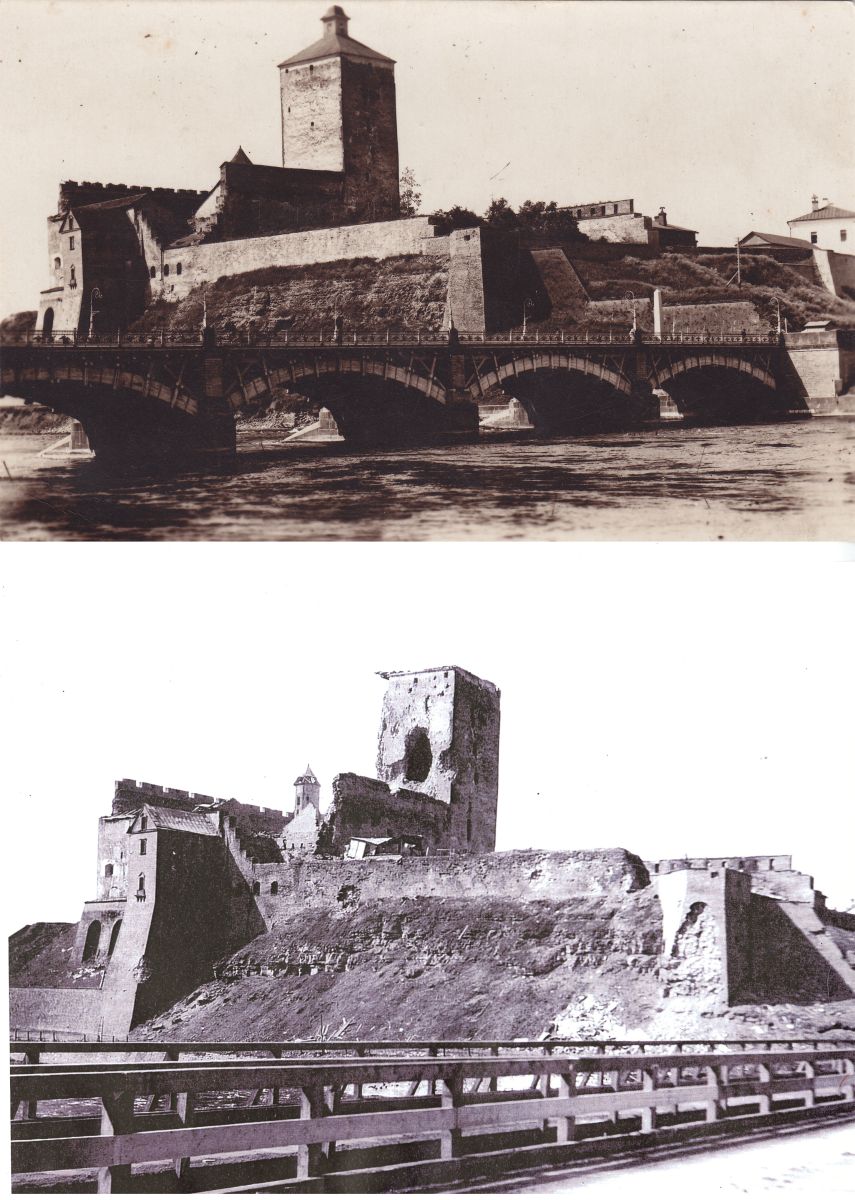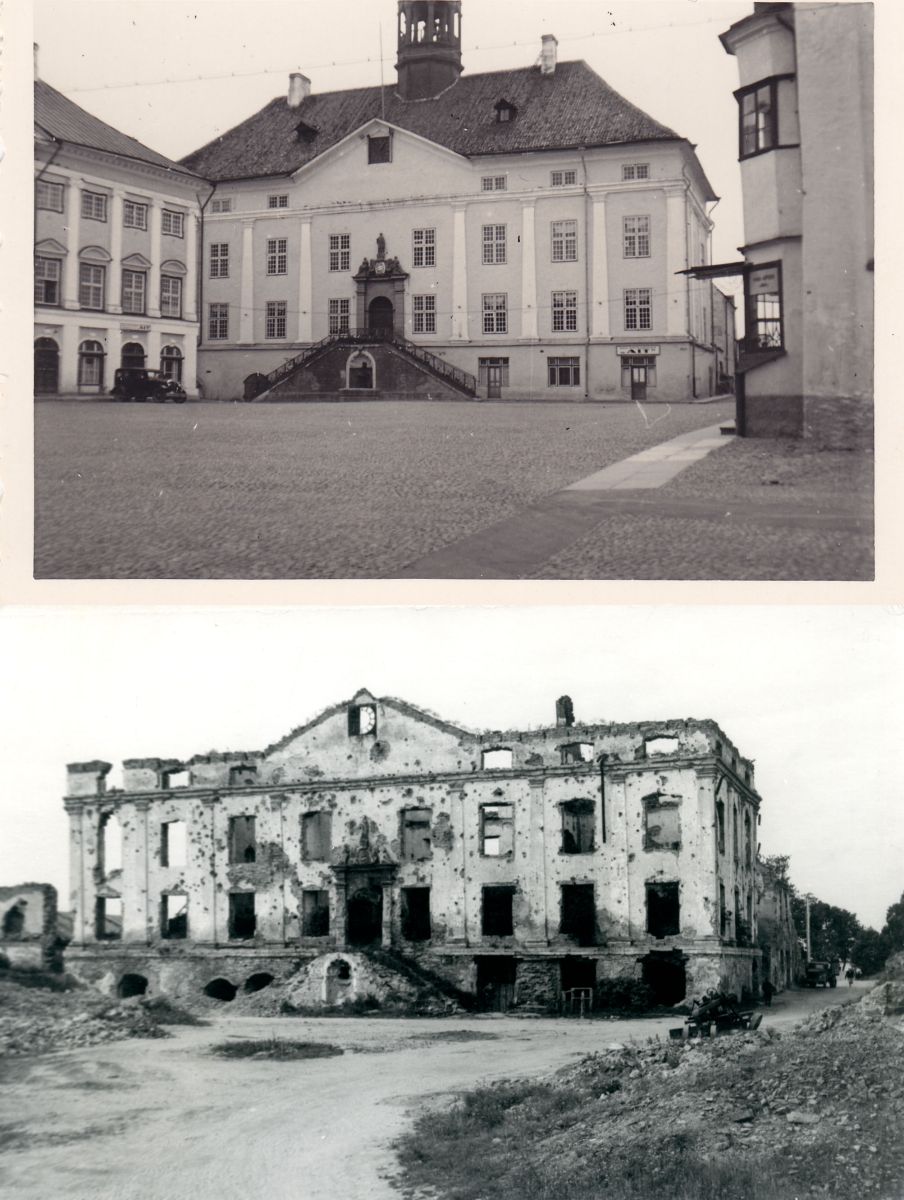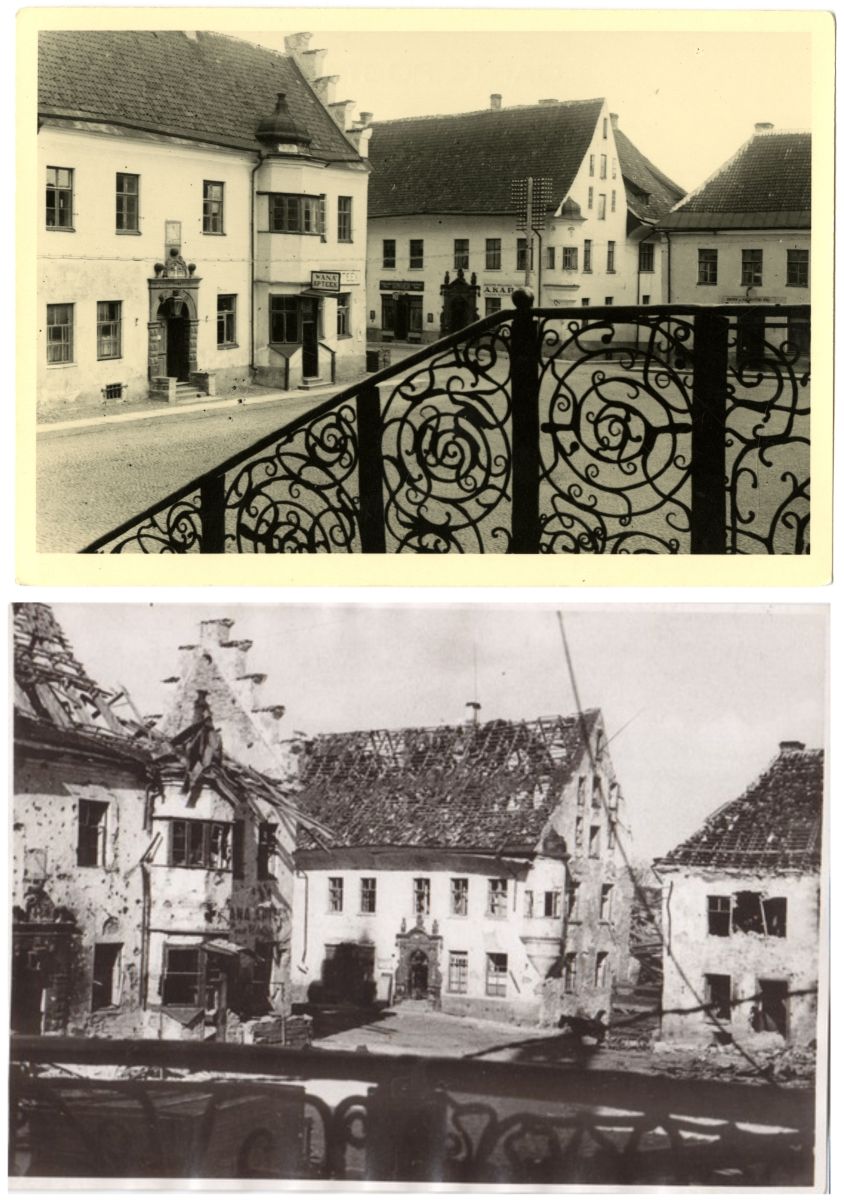Bombing of Narva in March 1944
At the beginning of 1944, Narva found itself at the epicenter of fierce battles of the Second World War. The Red Army was advancing to the west, pushing back the Wehrmacht forces.
One of the stages of the Red Army's offensive from March 6th to 8th was a large-scale bombing of the city of Narva, in which about 100 aircraft took part. On March 8th, the aerial attack was followed by artillery fire, which lasted for 2.5 hours. During the March bombing, a large part of the previously preserved city of Narva, including the historic old town, was destroyed. The day before the bombing, the city's residents were evacuated from the city by the Wehrmacht forces, which helped to avoid a large number of civilian casualties.
The Red Army continued to bomb the city in the subsequent months. The final blow to the destruction of the city came with a massive artillery barrage on July 25th, during which, among other targets, the relatively well-preserved Hermann Castle was turned into ruins. Demolitions prepared by retreating German forces also played a role in destroying urban structures, although they were only partially executed. On July 26th, 1944, the Red Army entered the evacuated city of Narva. Out of the 3200 pre-war buildings in the city, only about 200 remained more or less intact.
In March 1944, other cities in Estonia were also subjected to bombardments by the Red Army. For example, significant destruction occurred in Tallinn, where almost 35% of the city's residential buildings were destroyed. These days are remembered in Estonian history as the March Bombing.
Several facts about the destroyed Narva:
- After World War II, many buildings in the old town of Narva were still suitable for restoration, which can be seen in photographs. The ruined old town was placed under monument protection in 1947, and restoration projects were even prepared. Unfortunately, these plans of the occupying authorities remained only on paper: in 1953, the damaged buildings were demolished, and typical Soviet multi-story buildings were erected in their place.
- About fifty pre-war buildings have been preserved or restored, twenty of which have survived to this day.
- After the war, the most suitable houses for living were preserved in the Krenholm area, where the Soviet authorities directed the main funds for restoration work.
- After the war, the Soviet authorities conducted photo shoots of the buildings in Narva damaged during the hostilities. Based on them, a photo album was compiled in three languages, which was presented as "evidence" of German guilt at the Nuremberg Trials. Already from the first anniversary of the March bombing of Narva, a narrative spread about German destruction and Soviet reconstruction efforts.
On March 6th at 4:30 PM, an exhibition dedicated to the 80th anniversary of the March bombardment of Narva will open in the Castle Park of the Narva Museum (Pеetri plats 7). The exhibition will present an overview of World War II in Estonia and the destruction of Narva in 1944. The exhibition will be open until the end of 2024.

Narva. Carl Sarap. 1939 / Narva. 1944. NLM

Narva linnus. 1910–1918 / Narva linnus. 1944. NLM

Narva raekoda. 1930 / Narva raekoda. Enn Kiviste. 1950–1955. NLM

Narva linnus. 1912 / Narva linnus. 1945–1946. NLM

Raekoja plats. Carl Sarap. 1939 / Raekoja plats. 1944. NLM

Narva. Peeter I maja. 1923 / Peeter I maja. Vladimir Kostoškin. 1946–1947. NLM
